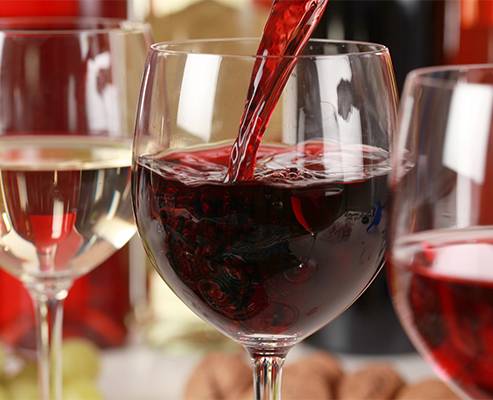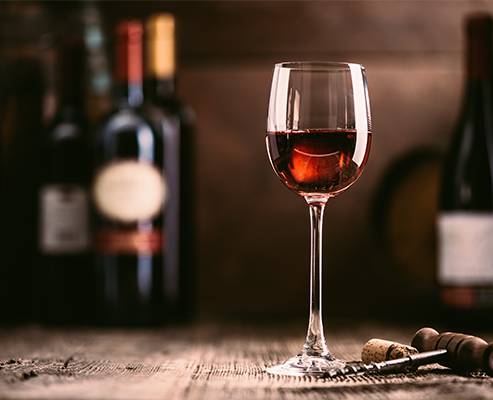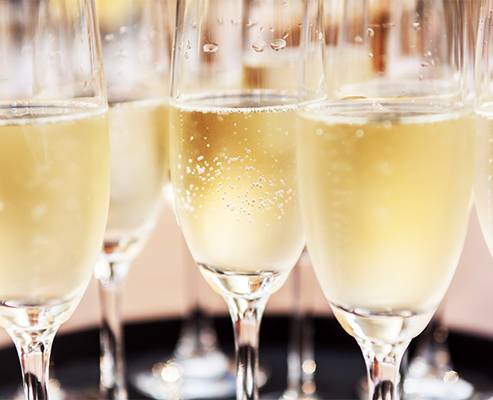SEMI-SPARKLING WINES

We often hear about semi-sparkling winesbut do we really know what they are? How are they made? And what are the differences with sparkling wines? Here, we will explain everything!
You probably know that semi-sparkling wines have a little bit of gas, don't you? That's their main characteristic. Let's first find out where those bubbles come from:
The bubbles that we find in wines come from carbon dioxide (CO2) that dissolves in the wine. This is trapped inside the bottle generating pressure. This pressure is measured in bars and to get an idea of what this is, let's think of the pressure of a bicycle wheel when we inflate it. This is where the thick bottles and special stoppers that sparkling wines require to be able to withstand this pressure come into play.
Knowing this, we can classify wines into 3 groups according to the CO2 they contain:
Still wines
We are referring to white, red or rosé wines that do not contain gas (CO2), although they can contain up to 2 grams per litre, which translates into a maximum of 0.5 bar of pressure. This amount is practically imperceptible to our palate.
To give us an idea, sometimes we open a bottle of wine, usually young wines, and we notice a slight tingling sensation on the tip of our tongue, and we see some bubbles that stick to the glass, but which disappear after a few moments, well, that is the CO2 that may have remained in a still wine. Let's say that the wheel of our bicycle is empty..

Semi-sparkling wines
Within sparkling wines we find those that can contain up to a maximum of 2.5 grams of CO2. The wheel of our bicycle is now half inflated, we can ride on it, but slowly, very gently... But let's go back to the gas, we know that there can be different quantities depending on the wine, but how does it get there? Well, I can tell you that it can be produced naturally or artificially.
In the fermentation process, which we have already talked about in previous articles on alcohol-free wines, we mentioned that in order to transform the must (grape juice) into wine, it had to ferment with the help of yeasts that transform sugars and other components into alcohol. During this process, carbon dioxide, CO2 gas, is released. If we manage to preserve this gas until bottling, we will obtain a natural semi-sparkling wine. We will obtain fine, integrated bubbles that will last for a long time in our glass.
The other way would be to incorporate gas artificially. If we think of a carbonated soft drink? That would be the same thing. We will find thicker bubbles, less integrated into the wine and with less persistence in the glass.


Sparkling wines
These are wines in which the carbonic gas is always produced by fermentation, and which will always have more than 3.5 bar of pressure, these are the well-known Cavas, Champagnes, etc. The wheel of the bicycle completely inflated to cycle quickly! . This whole variety of bubbles results in the production of very diverse wines. CO2 or carbonic gas (carbon dioxide) gives the wine taste sensations, and it also has the ability to enhance the aromas. It increases the sensation of freshness and acidity of the wines, while at the same time it softens their sweetness.
Gas is the great enemy of tannins, the astringent sensation provided by ageing in barrels or by the grape skins themselves, as it intensifies bitterness and astringency, even generating an unpleasant itchy sensation, especially in red wines.
In short, semi-sparkling wines are usually young wines, normally white or rosé, which may contain a little residual sugar and low alcohol strength (between 7-8 degrees). This makes them smooth, easy-going, very pleasant and ideal for drinking at any time.
Among the best known are Lambrusco and Prosecco, At Consum we offer you many possibilities, so don't hesitate to discover them!
What do you think about?
Share comments, opinions and tricks with the Community







